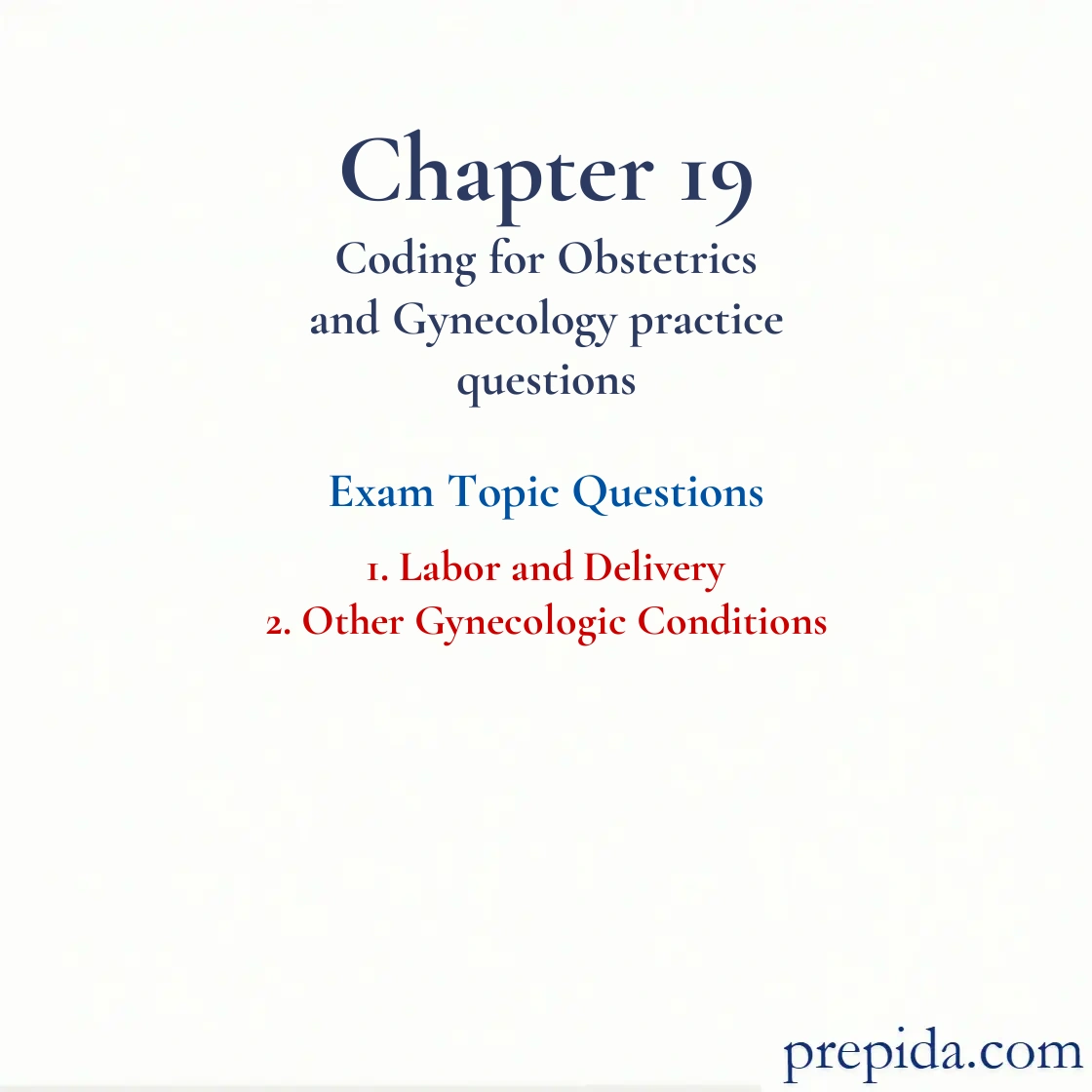
How many elements are there in the outcome of delivery code?
- 1
- 2
- 3
- 4
There are two elements for the outcome of delivery: how many babies were born during the delivery and whether they were live-born, stillborn, or a combination of both.
When coding for the mother, every encounter that results in the birth of a baby requires how many codes?
- 1
- 2
- 3
- 4
Two codes are required: one for the delivery and one for the outcome of the delivery.
Every time a patient gives birth, what is the last code on the mother's chart?
- Complication of pregnancy
- Complication of labor
- Complication of delivery
- Outcome of delivery
The outcome of delivery will be the last code on the mother's chart that will have anything to do with the baby.
Postpartum: The first 6 weeks after childbirth.
How long does the postpartum period last after delivery?
- 2 weeks
- 4 weeks
- 6 weeks
- 8 weeks
The postpartum period lasts for 6 weeks after delivery.
Postpartum: The first 6 weeks after childbirth.
Which of the following results in a loss of the fetus during pregnancy?
- Ectopic pregnancy
- Hydatidiform mole
- Spontaneous abortion
- All of these
Ectopic pregnancy, hydatidiform moles, and spontaneous abortion all result in a loss of the fetus during pregnancy.
Not Elsewhere Classifiable (NEC): Specifics that are not described in any other code in the book; also known as not elsewhere classified.
How long after delivery does the peripartum period last?
- 6 weeks
- 12 weeks
- 3 months
- 5 months
The peripartum period runs from the beginning of the last month of pregnancy to 5 months after delivery.
Gestation: The length of time for the complete development of a baby from conception to birth; on average 40 weeks.
What is the correct code assigned for Susan Sampson, who is coming in today 1 week after she delivered her baby to be examined and to meet with a lactation specialist to discuss nursing the baby?
- Z39.0
- Z39.1
- Z39.2
- Z33.1
The correct code for an encounter for care and examination of a lactating mother is Z39.1. Z39.1: Index>examination>lactating mother.
Sign: Objective evidence of a disease or condition.
Uterine fibroids are also known as:
- uterine leiomyoma.
- uterine fibromyoma.
- both uterine leiomyoma and uterine fibromyoma.
- neither uterine leiomyoma nor uterine fibromyoma.
Uterine fibroids are also known as uterine leiomyoma and uterine fibromyoma.
Benign: Nonmalignant characteristic of a neoplasm; not infectious or spreading.
What is the correct code for a patient with primary genital syphilis?
- A51.0
- A51.1
- A51.2
- A51.31
The correct code for a patient with primary genital syphilis is A51.0. A51.0: Index>syphilis>genital, primary.
Diagnosis: A physician’s determination of a patient’s condition, illness, or injury.
Smitty Smith is being seen today for Kaposi's sarcoma of the lymph nodes due to AIDS. What codes are assigned?
- B20, C46.3
- B20, C46.9
- C46.3, B20
- C46.9, B20
The correct codes for a patient with Kaposi’s sarcoma of the lymph nodes due to AIDS are B20 and C46.3. B20: Index>AIDS. C46.3: Index>Kaposi's sarcoma>lymph nodes.
Sign: Objective evidence of a disease or condition.
Justin Johnson is seen today for Hutchinson's teeth. What codes are assigned?
- A50.51
- A50.52
- A50.53
- A50.54
The correct code for a patient with Hutchinson's teeth is A50.52. A50.52: Index>Hutchinson's>teeth.
Sign: Objective evidence of a disease or condition.
Uterine fibroids are found to be benign what percentage of the time?
- 50 percent
- 75 percent
- 85 percent
- 99 percent
Uterine fibroids are found to be benign 99 percent of the time.
Benign: Nonmalignant characteristic of a neoplasm; not infectious or spreading.